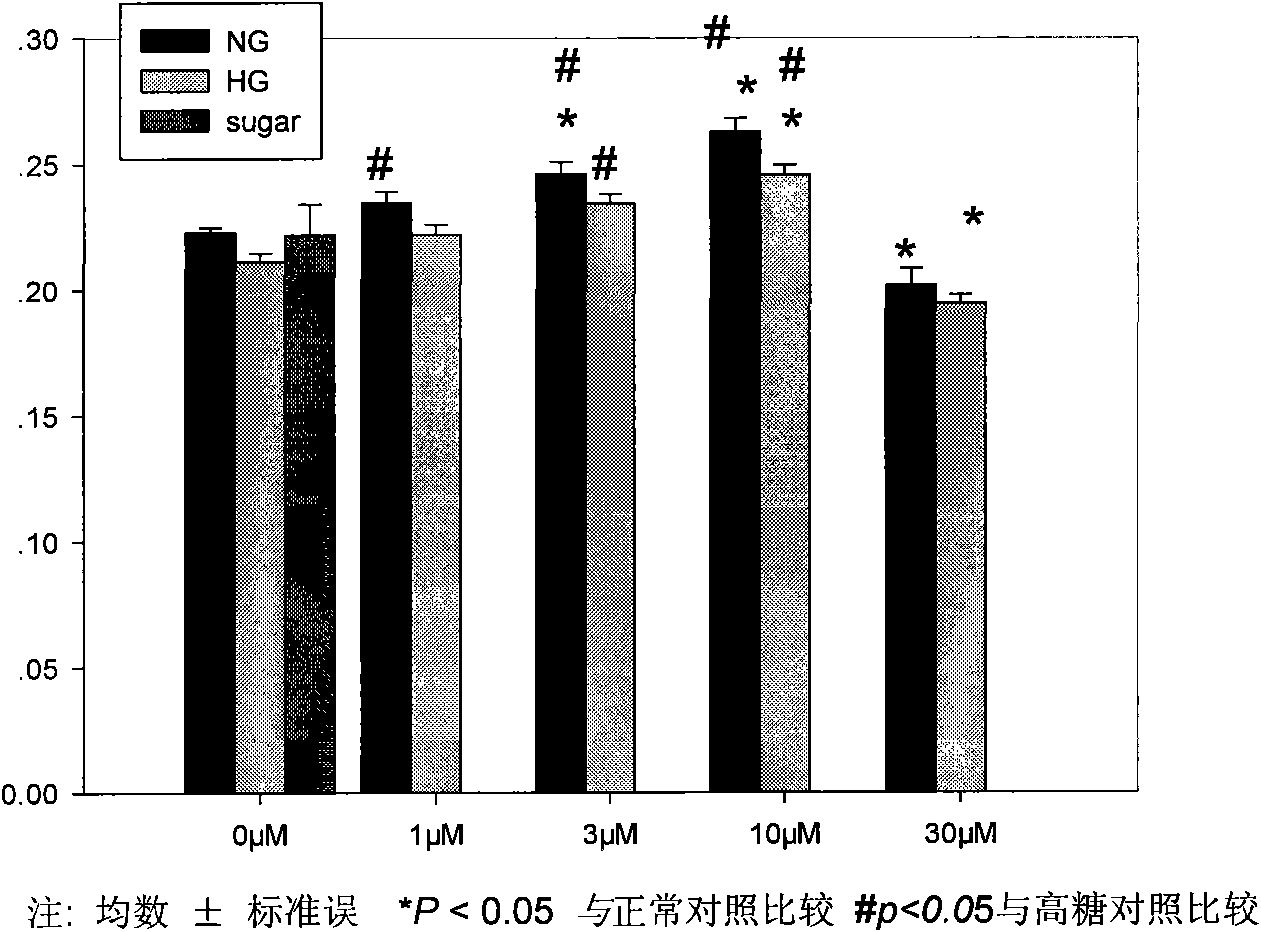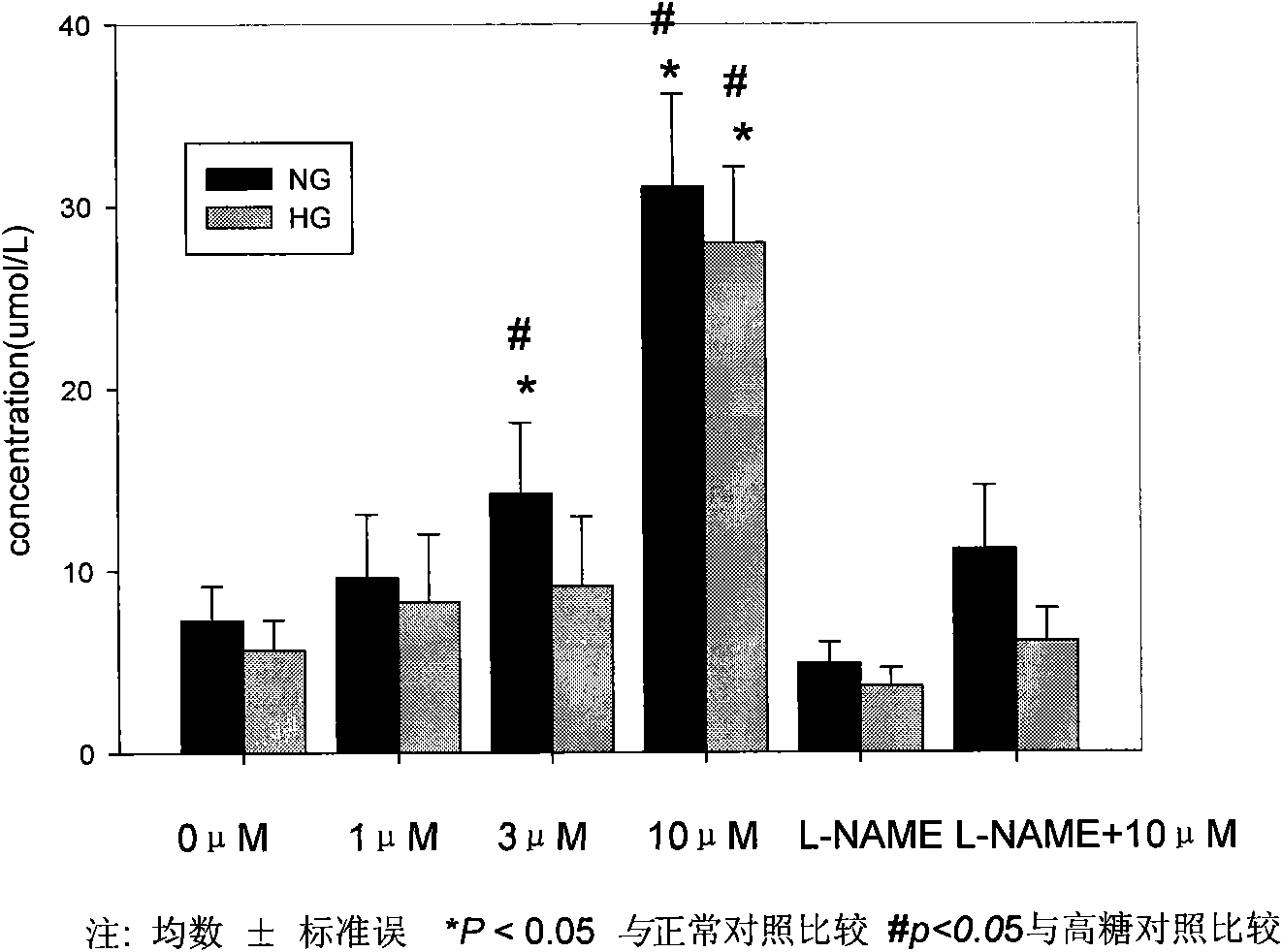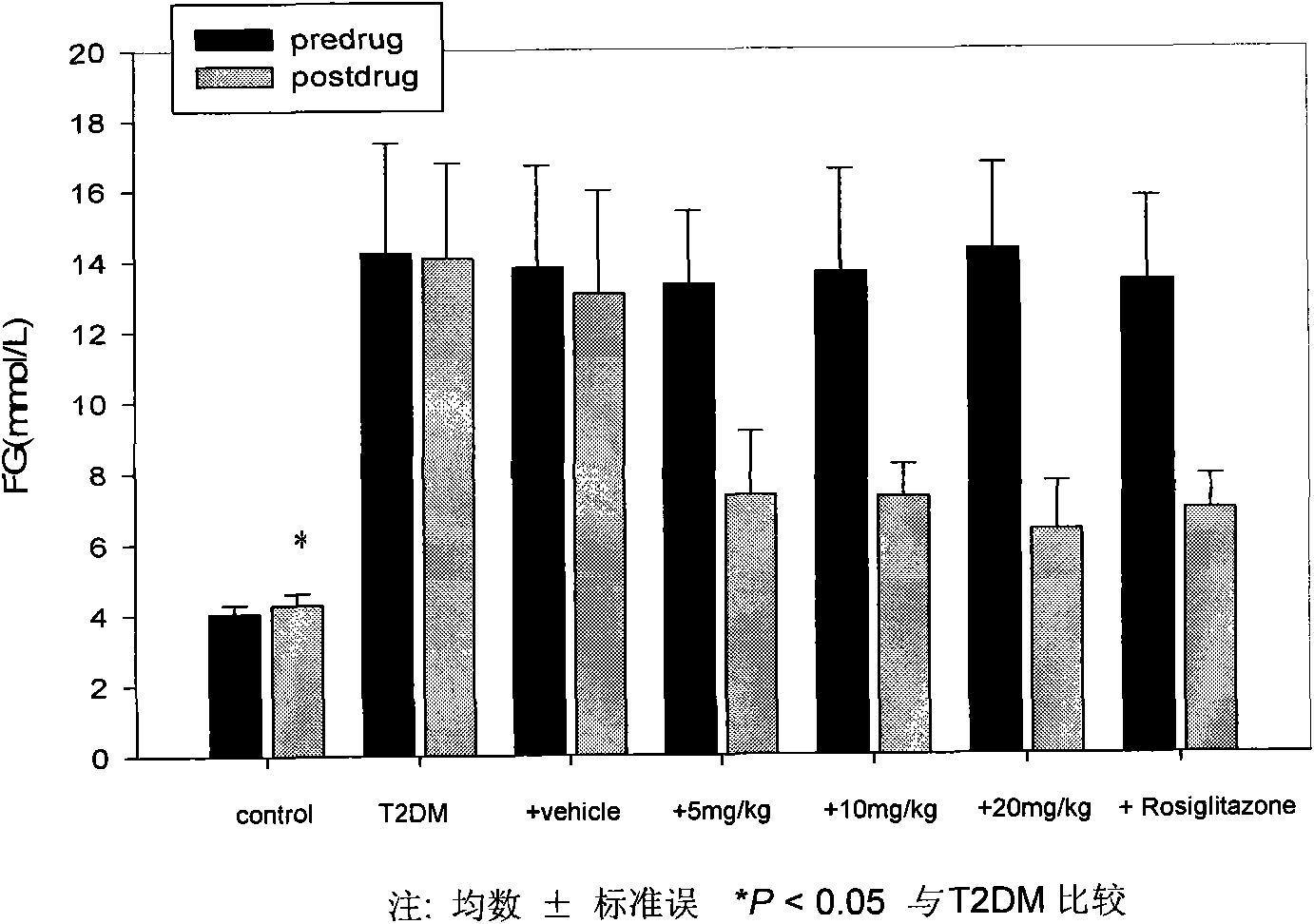Nitric oxide-donating chrysin derivatives, preparation method thereof, medical use thereof
A technology of nitric oxide and chrysin, which is applied in the field of diabetic cardiovascular complications, metabolic syndrome and related diseases, nitric oxide donor chrysin derivatives, and the treatment of diabetes
- Summary
- Abstract
- Description
- Claims
- Application Information
AI Technical Summary
Problems solved by technology
Method used
Image
Examples
Embodiment 1
[0061]
[0062] Chrysin (1) 0.01mol, anhydrous potassium carbonate 0.005mol and acetone 150ml, heated to boiling until the solution becomes clear, then add 0.05mol of 1,2-dibromobutane dropwise, and reflux for 24h. Suction filtration, take the filtrate and concentrate to obtain a yellow solid, wash the solid with petroleum ether, 1% sodium hydroxide, wash several times with water, and dry to obtain the intermediate product, light yellow solid (2); yield 74.5%, mp 146 ~147℃. 1 H NMR(CDCl 3 )δ(ppm): 12.71(s, 1H), 7.87~7.89(m,2H), 7.52~7.56(m,3H), 6.74(s,1H), 6.49~6.50(d,1H), 6.361~6.367 (d, 1H), 4.07 to 4.10 (m, 2H)), 3.48 to 3.51 (m, 2H), 1.98 to 2.12 (m, 4H). The intermediate product (2) 0.005mol and 50ml of anhydrous acetonitrile were heated to 50°C, and 20ml of acetonitrile solution containing 0.025mol of silver nitrate was added, and the temperature was continued to rise to 70°C and reacted for 1h in the dark. The silver bromide precipitate was removed by suction filtration...
Embodiment 2
[0064]
[0065] Chrysin (1) 0.01mol, anhydrous potassium carbonate 0.005mol and acetone 150ml, heated to boiling until the solution becomes clear, add bromoacetate, 0.02mol, and reflux for 24h. After suction filtration, the filtrate was concentrated to obtain a yellow solid. The solid was washed with petroleum ether, 1% sodium hydroxide, washed with water several times, and dried to obtain a light yellow solid (5). The yield was 71%. mp160°C. 1 H NMR(CDCl 3 )δ(ppm): 12.75(s, 1H), 7.87-7.89(m, 2H), 7.51-7.57(m, 3H), 6.68(s, 1H), 6.52-6.53(d, 1H), 6.372-6.377 (d, 1H), 4.7 (s, 2H), 4.27-4.32 (m, 2H), 1.30-1.34 (m, 3H). Use 0.005 mol of this light yellow solid (5), 30 ml of methanol, and 0.032 mol of potassium hydroxide, heat to reflux, and stir for 8 hours to obtain a yellow solid insoluble in methanol. Distill the methanol out under reduced pressure, add water to dissolve, adjust the PH to 2 with 1mol / L hydrochloric acid. A yellow solid was obtained by suction filtration, washe...
Embodiment 3
[0067]
[0068] Suspend 0.005mol of 7-carboxymethylchrysin (6) in 60ml of anhydrous dichloromethane, furoxan oxide (10) 0.005mol, DCC, 0.005mol and DMAP 0.002mol, and stir overnight at 25°C to form a white precipitate . The precipitate was filtered off, and the filtrate was concentrated to a dark yellow slightly sticky solid. Add appropriate amount of dichloromethane to dissolve, then add petroleum ether to precipitate a light yellow powdery solid, and wash with 5% potassium carbonate solution and water 3 times each, dry the obtained solid and recrystallize it with ethyl acetate-petroleum ether to give a light yellow Solid (9). The yield is 63%, mp174-175℃, 1 H NMR (CDCl3) δ (ppm): 12.76 (s, 1H), 7.87-7.89 (m, 2H), 7.63-7.65 (m, 2H), 7.49-7.57 (m, 6H), 6.68 (s, 1H) , 6.46-6.47 (d, 1H), 6.32-6.33 (d, 1H), 5.31 (s, 2H), 4.76 (s, 2H).
PUM
 Login to View More
Login to View More Abstract
Description
Claims
Application Information
 Login to View More
Login to View More - R&D
- Intellectual Property
- Life Sciences
- Materials
- Tech Scout
- Unparalleled Data Quality
- Higher Quality Content
- 60% Fewer Hallucinations
Browse by: Latest US Patents, China's latest patents, Technical Efficacy Thesaurus, Application Domain, Technology Topic, Popular Technical Reports.
© 2025 PatSnap. All rights reserved.Legal|Privacy policy|Modern Slavery Act Transparency Statement|Sitemap|About US| Contact US: help@patsnap.com



